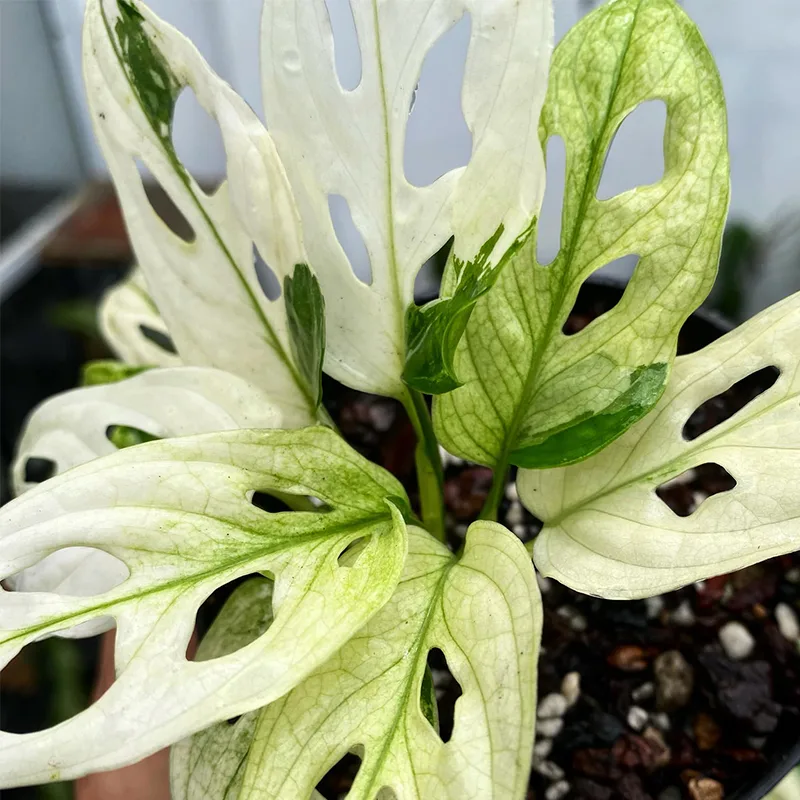
What Is Alocasia Gageana?
Alocasia Gageana is a striking houseplant known for its unique, shield-shaped leaves. The plant hails from tropical regions, where it thrives in warm, humid environments. Its leaves are typically dark green with prominent, silvery veins, adding a dramatic touch to any indoor garden. It’s a favorite among plant enthusiasts due to its exotic appearance and relatively manageable care requirements.
90 Species in Genus Alocasia – Elephant Ears
How to Identify Alocasia Gageana?
Identifying Alocasia Gageana can be straightforward once you know what to look for. The plant’s most notable features include:
- Leaf Shape: The leaves are broad, arrow-shaped, and have a glossy, dark green surface with silvery veins.
- Leaf Size: They can grow up to 12 inches long and 8 inches wide.
- Growth Habit: Alocasia Gageana grows from a central bulb, producing a rosette of leaves that can reach about 2 feet in height.
- Stem Structure: The plant has a sturdy, upright growth pattern with thick petioles.
If you’re ever unsure, comparing these features with images online can help confirm whether your plant is indeed Alocasia Gageana.
How to Care for Alocasia Gageana?
Caring for Alocasia Gageana involves several key practices:
- Light: This plant thrives in bright, indirect light. Avoid direct sunlight, which can scorch the leaves.
- Water: Keep the soil consistently moist but not waterlogged. Allow the top inch of soil to dry out between waterings.
- Humidity: High humidity is crucial. Regular misting or using a humidity tray can help mimic its native tropical conditions.
- Temperature: Maintain a temperature range of 65-80°F (18-27°C). Avoid cold drafts and sudden temperature changes.
- Soil: Use a well-draining, rich potting mix. A mix designed for tropical plants or a combination of peat, perlite, and orchid bark works well.
How to Propagate Alocasia Gageana?
Propagation of Alocasia Gageana is typically done through offsets or bulbs:
- Offsets: These are small bulbs that form around the base of the plant. Gently remove the plant from its pot, separate the offsets, and repot them individually.
- Bulbs: When repotting, you may find bulbs that have developed. Plant these bulbs in fresh soil, and they will eventually grow into new plants.
Propagation is best done during the growing season (spring or summer) for optimal results.
What to Plant With Alocasia Gageana?
Alocasia Gageana pairs well with other tropical plants that share similar care requirements. Consider these companions:
- Ferns: Their similar humidity and light needs complement Alocasia Gageana well.
- Philodendrons: These plants also thrive in indirect light and add a lush, green backdrop.
- Calatheas: Their striking foliage and humidity needs make them suitable companions.
Can You Grow Alocasia Gageana Indoors?
Yes, Alocasia Gageana is an excellent choice for indoor growing. It adapts well to indoor environments, provided it receives enough light and humidity. Make sure to position it in a spot where it gets bright, indirect light, and maintain a humid atmosphere around the plant.
Is Alocasia Gageana Toxic?
Alocasia Gageana is toxic if ingested. It contains calcium oxalate crystals, which can cause irritation in the mouth and digestive tract. Keep it out of reach of pets and young children. If ingestion occurs, seek medical advice promptly.
Benefits of Alocasia Gageana
Besides its aesthetic appeal, Alocasia Gageana offers several benefits:
- Air Purification: Like many houseplants, it can help improve indoor air quality by filtering out pollutants.
- Aesthetic Appeal: Its unique foliage adds a touch of the exotic to your home decor.
Common Problems and Solutions
- Yellow Leaves: This can indicate overwatering. Ensure the soil has proper drainage and allow it to dry slightly between waterings.
- Pests: Watch for common pests like spider mites and aphids. Regularly inspect your plant and use insecticidal soap if needed.
- Leaf Curling: This may be due to low humidity. Increase humidity by misting the plant or using a humidity tray.
Alocasia Gageana vs Macrorrhiza
Alocasia Gageana and Alocasia Macrorrhiza, also known as Giant Taro, have distinct differences:
- Leaf Size: Alocasia Macrorrhiza features much larger leaves compared to the smaller, more compact leaves of Alocasia Gageana.
- Growth Habit: Macrorrhiza grows into a large, bushy plant, while Gageana remains more compact and manageable.
Alocasia Gageana vs Odora
Alocasia Odora, also known as the Upright Elephant Ear, differs from Alocasia Gageana in several ways:
- Leaf Shape: Alocasia Odora has more elongated leaves compared to the broad, shield-shaped leaves of Gageana.
- Size: Odora can grow significantly taller and larger, whereas Gageana maintains a more modest size.
By understanding these differences, you can better appreciate the unique characteristics of Alocasia Gageana and how it fits into your plant collection.
If i die, water my plants!



